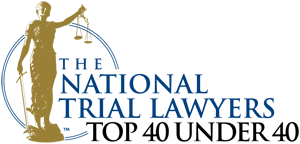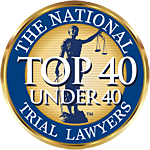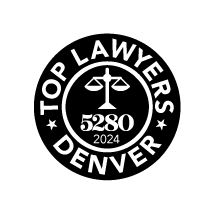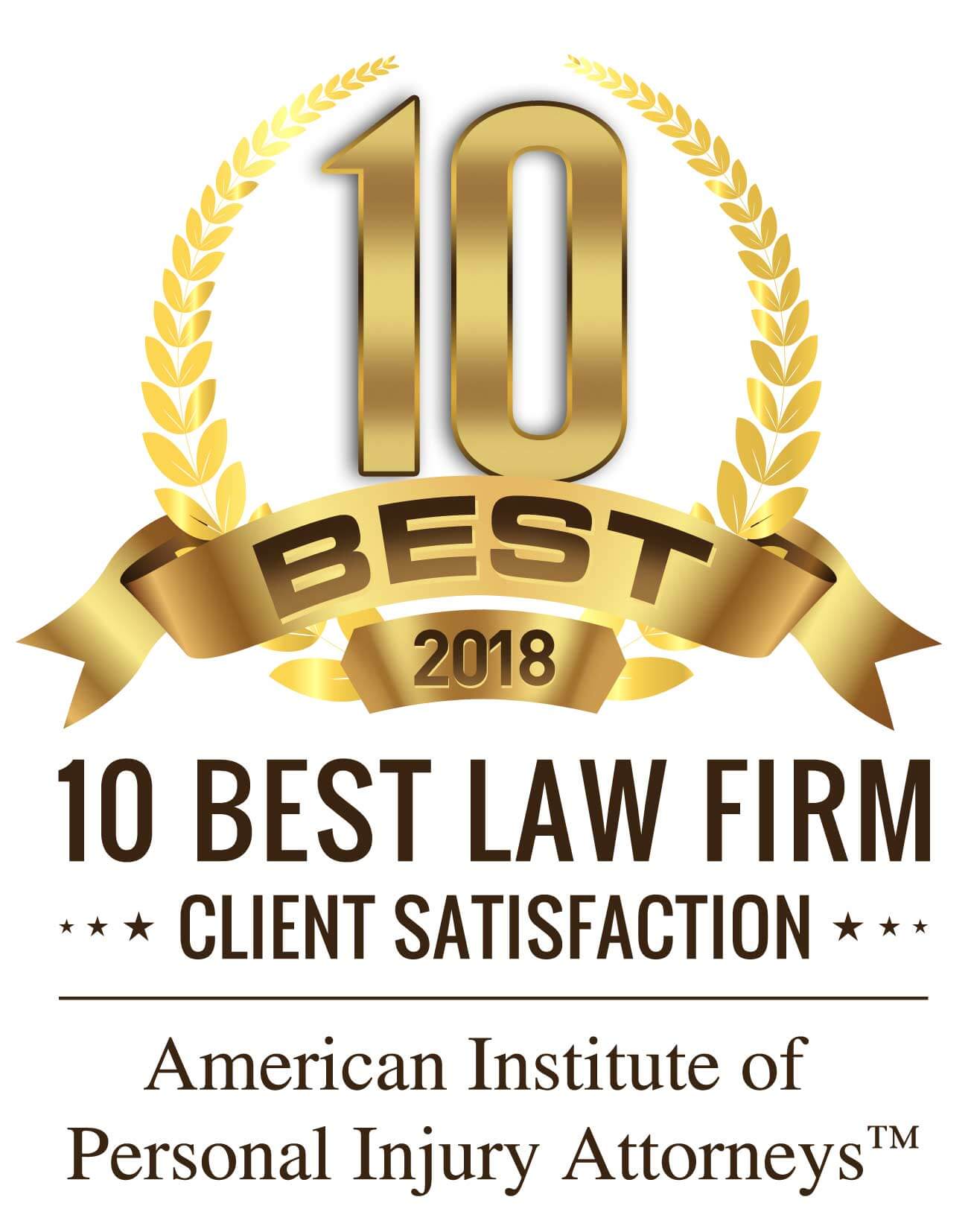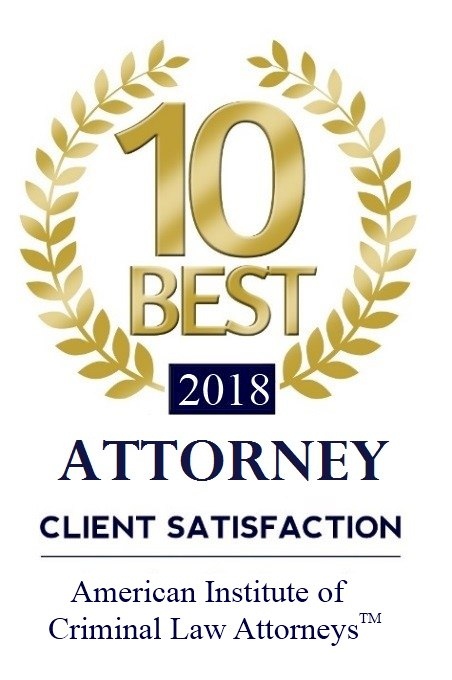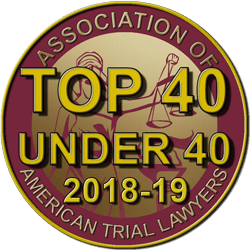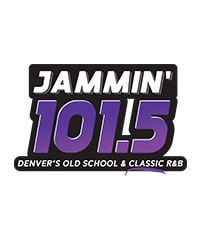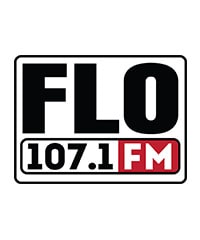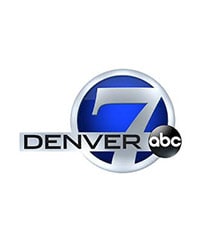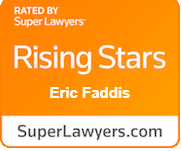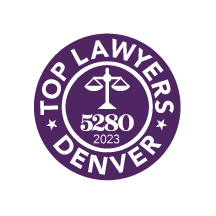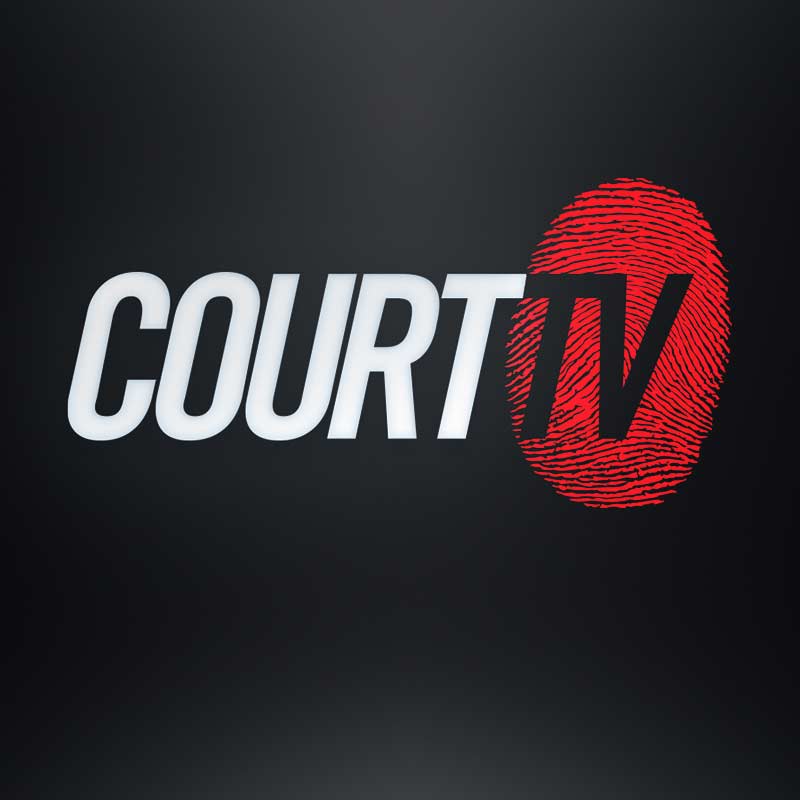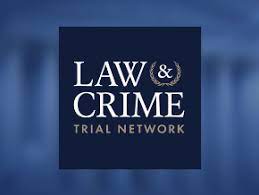Las intersecciones son una parte necesaria de nuestras carreteras e infraestructuras. Sin embargo, son un punto caliente para muchos tipos diferentes de accidentes. Demasiadas personas en Denver y en todo Estados Unidos sufren lesiones, algunas de ellas mortales, en las intersecciones o cerca de ellas mientras utilizan las carreteras. Si esto le ha sucedido a usted o a un ser querido, hable con un Denver abogado de accidente de coche lo antes posible es lo que más le conviene.
Las peores intersecciones para los accidentes de coche en Denver
Basándose en los accidentes ocurridos en un año reciente, las peores intersecciones para Abogados de Lesiones accidentes de tráfico son los siguientes:
- Colorado Boulevard/East Colfax Avenue en el barrio de Hale = 44 accidentes
- West Mississippi Avenue/South Santa Fe Drive en el barrio de Overland = 33 accidentes
- West Mississippi Avenue/South Platte River Drive en Athmar Park = 32 accidentes
- North Tower Road/East 56th Avenue en Gateway/Green Valley Ranch = 31 accidentes
- Bulevar Colorado/Avenida 40 Este en Park Hill Noreste = 30 accidentes
- West Alameda Avenue/South Santa Fe Drive en el barrio de Baker = 27 accidentes
- Calle Quebec Sur/Avenida Alameda Este en el barrio de Windsor = 26 accidentes
- Park Avenue West/North Globeville Road en Globeville = 25 accidentes
- West Colfax Avenue/Kalamath Street en Lincoln Park = 24 accidentes
- Colorado Boulevard/East Martin Luther King Jr. Boulevard en North Park Hill = 24 accidentes
Hay muchas otras intersecciones donde los accidentes son comunes en el área de Denver, ya que estas son sólo las diez más peligrosas. No importa lo cuidadoso que sea al pasar por una intersección, otro conductor puede ser negligente y causar una colisión.
Si esto le sucede a usted y usted sufre lesiones, buscar inmediatamente una consulta con un abogado de accidente de coche de Denver.
Causas comunes de accidentes en intersecciones en Denver
El principal factor que contribuye a los accidentes de coche en Denver sigue siendo la conducción descuidada, encabezando la lista de causas frecuentes. Le siguen de cerca las infracciones de carril, no ceder el paso, ir a rebufo y el exceso de velocidad. Más allá de estos factores prevalentes, las causas adicionales específicas de intersección accidentes en Denver incluyen lo siguiente:
- Conductores inexpertos: Los conductores noveles que circulan por las carreteras de Denver pueden sufrir accidentes en los cruces debido a su falta de familiaridad con las pautas de tráfico y las normas sobre el derecho de paso.e
- Conducción agresiva: Los casos de conducción agresiva, caracterizados por comportamientos como exceso de velocidad, cambios bruscos de carril e interacciones hostiles con otros usuarios de la vía, pueden aumentar el riesgo de accidentes en las intersecciones.
- Conducción bajo los efectos del alcohol: La conducción bajo los efectos del alcohol sigue siendo motivo de gran preocupación, ya que provoca alteraciones del juicio y tiempos de reacción más lentos, sobre todo en los cruces, donde es crucial tomar decisiones con rapidez.
- Carreteras congestionadas: Denver experimenta afluencias periódicas de visitantes, lo que congestiona las carreteras en determinadas épocas del año. El aumento de la densidad del tráfico puede contribuir a que se produzcan accidentes en las intersecciones cuando los conductores circulan por las bulliciosas calles de la ciudad.
- Condiciones meteorológicas adversas: El clima de Denver puede ser impredecible, con nieve, hielo y aguanieve que plantean desafíos para los conductores. Las condiciones meteorológicas adversas aumentan el riesgo de accidentes en las intersecciones debido a las carreteras resbaladizas y reducen la visibilidad, lo que exige una mayor precaución.
- Conducción inexperta en terreno helado: Dada la susceptibilidad de Denver al terreno helado durante los meses más fríos, los conductores inexpertos en la navegación por carreteras heladas pueden encontrar dificultades en las intersecciones, lo que puede conducir a accidentes.
Cuando usted contrata a un abogado experto en accidentes automovilísticos de Denver, ellos investigarán a fondo su accidente de intersección para determinar cómo sucedió y quién podría ser responsable de sus lesiones.
Las intersecciones peatonales más peligrosas de Denver
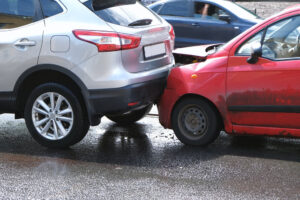 Mientras que ciertas regiones son reconocidas por el tráfico pesado y el aumento de accidentes de vehículos de motor, intersecciones específicas son particularmente peligrosas para los peatones en Denver. Las cinco principales intersecciones que contribuyen a los accidentes peatonales son:
Mientras que ciertas regiones son reconocidas por el tráfico pesado y el aumento de accidentes de vehículos de motor, intersecciones específicas son particularmente peligrosas para los peatones en Denver. Las cinco principales intersecciones que contribuyen a los accidentes peatonales son:
- South University Boulevard y East Asbury Avenue
- Blake Street y 20th Street
- North Broadway y East 13th Avenue
- Lincoln Norte y Colfax Este
- Mercado y 20
Aunque la mayoría de los accidentes y muertes de peatones ocurren en vías que no son intersecciones, aproximadamente entre el 17 y el 20 por ciento ocurren en intersecciones, según informa la NHTSA. A pesar de las señales adecuadas, las protecciones del derecho de paso y la señalización de los peatones, pueden producirse accidentes cuando se cruzan automovilistas y peatones. Situaciones habituales que provocan accidentes de peatones en las intersecciones incluyen:
- Conductores que giran a la derecha o a la izquierda mientras cruzan los peatones
- Automovilistas que atraviesan la intersección mientras los peatones cruzan
- Conductores que no respetan las señales de tráfico
- Instancias del conductor general negligencia
Es importante reconocer estas intersecciones de alto riesgo y extremar la precaución al circular por ellas. Incluso con las medidas de seguridad designadas, el potencial de accidentes persiste, destacando la necesidad de una mayor conciencia y adhesión a las normas de tráfico, tanto por parte de los automovilistas como de los peatones.
¿Qué hace que las intersecciones sean tan peligrosas?
Las intersecciones se consideran zonas de alto riesgo de accidentes debido a varios factores que aumentan la probabilidad de colisiones. Algunas razones clave son:
- Convergencia del tráfico: Las intersecciones son puntos en los que se cruzan varias carreteras, lo que provoca la convergencia del tráfico procedente de distintas direcciones. La complejidad de gestionar vehículos que circulan simultáneamente en varias direcciones aumenta el potencial de accidentes.
- Movimientos conflictivos: Los distintos vehículos de una intersección suelen tener movimientos contradictorios, como girar a la izquierda, a la derecha o seguir recto. Coordinar estas maniobras tan variadas aumenta el riesgo de que los vehículos se crucen y colisionen.
- Cuestiones relacionadas con el derecho de paso: Determinar el derecho de paso en las intersecciones es crucial para la fluidez del tráfico. Sin embargo, los malentendidos o las infracciones de las normas sobre el derecho de paso pueden provocar accidentes, sobre todo cuando los conductores no ceden el paso a los demás como es debido.
- Cruces peatonales: Las intersecciones son lugares habituales para el cruce de peatones. La mezcla de peatones y vehículos crea retos adicionales, ya que los conductores deben estar atentos y ceder el paso a los peatones, y los peatones deben sortear el tráfico con seguridad.
- Complejidad de las señales de tráfico: Las intersecciones suelen contar con múltiples señales de tráfico, carteles y marcas viales. La interpretación errónea o el desprecio de estas señales pueden provocar accidentes. Factores como señales oscurecidas, señales defectuosas o visibilidad inadecuada pueden contribuir aún más a la confusión. Supongamos que se produce una colisión debido al mal funcionamiento de un semáforo o a una señal de tráfico oscurecida. En ese caso, la responsabilidad puede recaer en el municipio responsable del mantenimiento de los dispositivos de control del tráfico de la intersección.
- Accidentes de giro a la izquierda: Los accidentes por girar a la izquierda son comunes en las intersecciones. Los conductores que intentan girar a la izquierda deben sortear el tráfico que se aproxima, lo que puede dar lugar a errores de apreciación, a no ceder el paso o a colisiones con vehículos que siguen recto o que giran a la izquierda en sentido contrario.
- Saltarse semáforos en rojo: Las infracciones de las señales de tráfico, especialmente saltarse semáforos en rojo, contribuyen significativamente a los accidentes en intersecciones. Los conductores que se saltan semáforos en rojo corren el riesgo de colisionar con vehículos que entran legalmente en la intersección desde otras direcciones.
- Conducción distraída: Las intersecciones son puntos críticos donde es necesario tomar decisiones en fracciones de segundo, que requieren toda la atención de los que están al volante. Los conductores distraídos por teléfonos, sistemas de navegación u otros factores pueden no reaccionar a tiempo, aumentando la probabilidad de accidentes.
- Exceso de velocidad: El exceso de velocidad en los cruces aumenta la gravedad de los accidentes. Las velocidades más altas reducen el tiempo de reacción y aumentan la fuerza del impacto, lo que hace más difícil evitar las colisiones o mitigar sus consecuencias.
- Condiciones meteorológicas adversas: Las condiciones meteorológicas adversas, como la lluvia, la nieve o el hielo, pueden complicar aún más la navegación en las intersecciones. La visibilidad reducida, las calzadas resbaladizas y la pérdida de control del vehículo contribuyen a aumentar el riesgo de accidentes. En condiciones meteorológicas adversas, se espera que los conductores ajusten su comportamiento al volante en consecuencia. Si un conductor no lo hace y provoca un accidente, puede ser responsable.
Carreteras peligrosas de Denver: I-25 y I-70
Además de las intersecciones peligrosas de Denver, dos de las carreteras más peligrosas de Denver son la I-25 y la I-70. La I-70, que atraviesa la ciudad de este a oeste, ha sido testigo de un gran número de accidentes mortales, casi 134 en un año reciente. Muchas más personas sufren lesiones en accidentes en la I-70.
La I-25 ha adquirido notoriedad como una de las rutas de mayor riesgo para los conductores que circulan por esta arteria principal norte-sur que atraviesa la ciudad. La combinación de carriles constantemente abarrotados y conductores frustrados contribuye a aumentar el riesgo.
Un exhaustivo estudio realizado por una cadena local de noticias de Denver examinó los registros policiales de informes de accidentes en la I-25. El tramo entre Santa Fe y la I-70 resultó ser el más mortífero para los conductores. Este tramo concreto de la I-25 ostenta el lamentable honor de albergar el mayor número de accidentes interestatales de todo el estado de Colorado.
Los accidentes de carretera pueden causar lesiones especialmente graves, ya que los vehículos implicados suelen viajar a mayor velocidad. Muchos conductores pueden tratar de zigzaguear a través del tráfico mientras van a 70 millas por hora o más rápido, y si chocan con otro vehículo, los resultados pueden ser devastadores. Dado que tanto la I-70 como la I-25 están constantemente atestadas de tráfico, una colisión puede provocar fácilmente una reacción en cadena, con el resultado de daños en varios vehículos y lesiones en varios automovilistas.
Si ha sufrido lesiones en la interestatal en Denver, póngase en contacto inmediatamente con un abogado de accidentes de tráfico de confianza. Ellos pueden examinar lo sucedido para determinar quién debe ser responsable de su reclamaciones por lesiones y pérdidas.
¿Cómo determina un abogado la responsabilidad en un accidente en una intersección?
Una evaluación exhaustiva de las circunstancias de la colisión determina la responsabilidad en un accidente de intersección. Su abogado tendrá en cuenta diversos factores y analizar las pruebas disponibles para establecer quién tiene la culpa. He aquí una visión general del proceso y los factores que intervienen en la determinación de la responsabilidad:
Informe policial
Después de un accidente en una intersección, las fuerzas del orden suelen acudir al lugar y redactar un informe del accidente. Este informe incluye detalles como el lugar, la hora y la causa del accidente, así como las declaraciones de las partes implicadas y de los testigos. El informe de la policía puede proporcionar información valiosa en la evaluación de la responsabilidad.
Leyes y normas de tráfico
Las leyes y normas de tráfico desempeñan un papel crucial en la determinación de la responsabilidad. Infracciones como saltarse semáforos en rojo, no ceder el paso o no respetar las señales de stop pueden determinar claramente la culpabilidad. El cumplimiento de las normas sobre el derecho de paso y otras normas de tráfico debe examinarse cuidadosamente.
Testimonio de testigos presenciales
Las declaraciones de los testigos presenciales que observaron el accidente pueden aportar información valiosa. Sus relatos pueden ayudar a corroborar o rebatir las narraciones de las partes implicadas, ayudando a determinar la responsabilidad.
Señales de tráfico
Se evalúa la funcionalidad de los semáforos y señales de tráfico en la intersección. Un mal funcionamiento de las señales o unas señales oscurecidas pueden contribuir al accidente. Pueden trasladar la responsabilidad a la entidad responsable del mantenimiento de los dispositivos de control del tráfico de la intersección.
Vídeos
Las cámaras de vigilancia situadas en la intersección o cerca de ella pueden captar el accidente. Las imágenes de vídeo pueden mostrar claramente los acontecimientos que condujeron a la colisión, ayudando a determinar qué parte es culpable.
Daños en vehículos y reconstrucción de accidentes
El examen de los daños sufridos por los vehículos implicados puede ofrecer información sobre el punto de impacto y la secuencia probable de los hechos. Los expertos en reconstrucción de accidentes pueden analizar la escena y ofrecer una reconstrucción detallada del accidente.
Declaraciones del conductor
Las declaraciones de los conductores implicados en el accidente son clave. Admisiones de culpa, disculpas u otras declaraciones hechas en la escena o más tarde pueden ser pruebas para determinar la responsabilidad. Como tal, usted debe evitar disculparse o admitir la culpa de un accidente, incluso si usted piensa que es su culpa. En su lugar, hable con su abogado al respecto; ellos sabrán mejor cómo manejar la situación.
Opiniones de expertos
Los dictámenes periciales de especialistas en reconstrucción de accidentes, ingenieros u otros profesionales pueden proporcionar un análisis exhaustivo de la colisión, especialmente en casos en los que intervienen factores complejos.
La determinación de la responsabilidad es a menudo un proceso complejo que implica la evaluación de múltiples factores. Las compañías de seguros, los profesionales del derecho y, a veces, los tribunales desempeñan un papel importante en la interpretación de las pruebas y la asignación de la culpa entre las partes implicadas. Cuando varias partes comparten la culpa, el prorrateo de su responsabilidad puede ser un reto, y su abogado de accidente de coche puede supervisar este proceso.
¿Estuvo usted en un accidente en una intersección de Denver? Póngase en contacto con un abogado experto en accidentes automovilísticos hoy mismo
Un accidente en una intersección puede causar lesiones graves, que requieren tratamiento médico extenso, además de crear confusión sobre lo que debe hacer a continuación. Si usted o un ser querido ha sufrido recientemente lesiones en un accidente de este tipo, no tarde en ponerse en contacto con un abogado de accidentes de coche en Denver. Su abogado puede evaluar los detalles de su accidente y lesiones para determinar los pasos a seguir. Si es en su mejor interés para presentar una demanda por lesiones, que puede manejar ese proceso. También pueden representarle en las negociaciones de acuerdo y presentar una demanda en Denver en su nombre si es necesario.
Permitir que una persona de confianza abogado de lesiones personales para manejar el proceso legal mientras usted se concentra en su tratamiento médico y recuperación física. Solicite ayuda legal hoy mismo. Las consultas son gratuitas.



